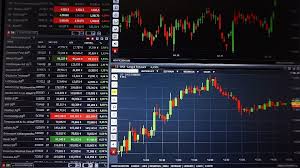
Understanding Forex Trading: Definition and Fundamentals
Forex trading, commonly referred to as foreign exchange trading, involves the buying and selling of currencies in the foreign exchange market. This market is recognized as one of the largest financial markets in the world, with daily trading volumes exceeding $6 trillion. In this article, we will delve into the definition of Forex trading, explore its mechanics, and discuss strategies and tips for getting started. For anyone looking to navigate this complex environment, consider using the forex trading definition Best Platforms for Trading.
What is Forex Trading?
Forex trading is the process of speculating on the price movements of currency pairs — for example, the euro against the US dollar (EUR/USD). Traders buy a currency pair if they believe the value of the first currency will rise relative to the second and sell if they think it will fall. The primary goal is to exchange one currency for another at a favorable rate.
Market Structure and Participants
The Forex market operates 24 hours a day, five days a week, and is decentralized, meaning there is no central exchange. Instead, the market is made up of a network of banks, institutions, corporations, and individual traders that engage in currency transactions. Key participants include:
- Central Banks: They manage national currencies and monetary policy, playing a significant role in exchange rate stability.
- Financial Institutions: Major banks conduct currency trades on behalf of their clients or for proprietary trading.
- Corporations: Companies involved in international trade, needing to exchange currencies for their operations.
- Retail Traders: Individual traders who participate in the market via brokerage platforms.

How Forex Trading Works
The Forex market operates through a system of currency pairs. Each pair consists of a base currency and a quote currency. For example, in the pair USD/JPY, the USD is the base currency, and the JPY is the quote currency. When trading, the price of a currency pair indicates how much of the quote currency is needed to purchase one unit of the base currency.
Exchange rates fluctuate based on supply and demand for different currencies and are influenced by various factors, including economic indicators, political events, and overall market sentiment. Traders can use fundamental analysis, technical analysis, or a combination of both to make informed decisions.
Types of Forex Trading
There are several styles of trading in the Forex market, each catering to different types of traders:
- Day Trading: Involves executing multiple trades within a single day, aiming to profit from short-term price movements.
- Swing Trading: Focuses on holding positions for several days to capture larger price shifts.
- Scalping: A short-term strategy that attempts to profit from minor price changes, with traders executing several trades throughout the day.
- Position Trading: A long-term strategy where traders hold positions for weeks, months, or even years.
Leverage and Margin in Forex Trading
One of the defining characteristics of Forex trading is the use of leverage, which allows traders to control larger positions with a smaller amount of capital. For example, a broker may offer 100:1 leverage, meaning a trader can control $100,000 worth of currency with just $1,000 of margin. While leverage can amplify profits, it also increases potential losses, making risk management crucial.

Forex Strategies for Success
Successful Forex trading involves developing effective strategies. Here are a few common strategies employed by traders:
- Technical Analysis: Involves analyzing past price data and using charts and indicators to predict future price movements.
- Fundamental Analysis: Focuses on economic indicators, central bank policies, and geopolitical events to anticipate currency movements.
- Sentiment Analysis: Gauges market sentiment by analyzing the positioning of other traders and institutions.
- Risk Management Strategy: Involves setting stop-loss and take-profit orders to manage potential losses and protect profits.
Getting Started with Forex Trading
For those interested in entering the Forex market, here are some essential steps to consider:
- Education: Learn about market mechanics, trading strategies, and risk management. Numerous online courses and resources are available.
- Choose a Forex Broker: Select a reliable and regulated broker. Look for one that offers a user-friendly trading platform.
- Open a Trading Account: Most brokers provide demo accounts for new traders to practice without risking real money.
- Develop a Trading Plan: Create a structured plan outlining your trading strategy, risk tolerance, and trading goals.
- Start Trading: Once comfortable, start trading with a small amount of capital and gradually increase as you gain more experience.
Conclusion
Forex trading is an exciting and potentially lucrative field for individuals interested in the financial markets. While it requires knowledge, skill, and discipline, understanding its fundamental concepts can significantly enhance your trading journey. Start small and always prioritize risk management to build a sustainable trading career in this dynamic environment.
